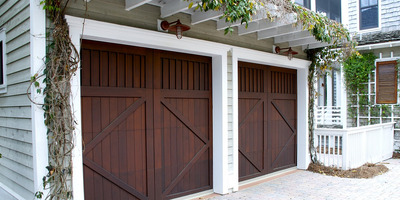Flagstone Landscaping: Benefits, Installation Tips, and Maintenance Guide
Flagstone Landscaping: Benefits, Installation Tips, and Maintenance Guide
Property owners often seek natural, practical, and long-lasting materials for outdoor upgrades. Among the most effective solutions is flagstone installation in Toronto, which combines durability with aesthetic appeal. Known for its distinctive character and dependable performance, flagstone is ideal for enhancing walkways, patios, garden paths, and more.
Flagstone is known for its texture, strength, and adaptability. These characteristics matter in every landscaping project, especially when aiming for functionality alongside visual appeal. Homeowners, contractors, and designers prefer this stone not for trends but for tangible, proven qualities. Flagstone doesn’t shift easily underfoot. It resists heavy impact. It stays cool under direct sunlight and handles varied Canadian climates without buckling or fading.
Flagstone supports both aesthetic goals and structural needs. Whether in small residential gardens or extensive commercial courtyards, it holds up over time with minimal intervention.
Benefits of Choosing Flagstone Over Other Natural Stones
Flagstone stands out for its durability, handling foot traffic and weather without cracking—ideal for entrances, patios, and pool areas.
Its rough texture offers natural slip-resistance, improving safety in wet or icy conditions.
Irregular shapes allow flexible placement and better fit with natural landscape contours, making the design more adaptable.
It supports both dry-lay and mortar-set installation, giving options for drainage or a more solid surface.
Available in a variety of earthy tones, flagstone blends well with surrounding features without overwhelming the space.
Where Flagstone Works Best in Landscaping
Flagstone suits many outdoor uses. Patios benefit from its strength and even surface—comfortable for walking, stable for furniture, gentle on nearby plants.
Garden paths stay practical and attractive. Gaps between stones absorb water, reducing puddles and supporting soil health. Easy maintenance adds to their appeal.
Retaining walls and steps gain both function and visual unity from flagstone. It performs well around fire pits, entryways, and water features due to its stability under heat and moisture.
In freeze-thaw climates, flagstone resists cracking. That’s one reason it remains a go-to material for outdoor surfaces across Canadian climates.
Key Factors to Consider Before Installation
Every flagstone project needs site-specific planning. Soil type, slope, drainage, and sunlight exposure all affect installation.
Shaded, moist areas may need different base materials to avoid moss or shifting. Sloped yards often require reinforced edges and water control.
Stone thickness matters. For walkways or driveways, choose stones at least 1.5 inches thick for stability.
Flagstone types vary—sandstone, slate, and limestone all react differently to moisture and temperature. Pick one suited to your climate and use.
Joint material influences durability and appearance. Crushed stone or polymeric sand suits dry-lay; mortar or grout fits concrete-set styles.
Proper drainage is crucial. Grading and a gravel base prevent water buildup and surface damage. Careful planning ensures lasting results.
Installation Methods Recommended by Professionals
Professionals use two main methods: dry-lay and mortar-set. Each suits different site conditions and goals.
Dry-lay involves placing flagstone over a compacted gravel and sand base. It’s flexible, allows drainage, and is easier to repair. Ideal for informal paths, rustic patios, or areas with water runoff.
Mortar-set installs flagstone over concrete using cement mortar. This method gives a stable, even surface for high-traffic zones like patios and steps. It requires more prep and precision.
Sealing, especially for mortar-set jobs, helps protect against stains and wear, though some prefer the natural look of unsealed stone.
Accurate cutting ensures proper fit. Tight patterns need trimming; loose layouts allow irregular shapes. Regardless of method, proper base prep is essential for lasting results.
Maintenance Tips for Long-Term Performance
Once installed, flagstone surfaces require occasional care. Regular upkeep helps retain appearance and ensures durability over years of use.
Start with cleaning. Remove debris using a broom or leaf blower. For deeper dirt or stains, wash with mild soap and water. Avoid high-pressure washers unless handled carefully, as excessive force may loosen joints or flake the stone.
Weed control is another task. In dry-laid surfaces, weeds may grow in joints. Use polymeric sand to reduce this risk, or apply safe herbicides sparingly. Moss growth, while decorative to some, may become slippery. Scrubbing with diluted vinegar or a stiff brush addresses this without harsh chemicals.
Watch for movement or settling. If certain stones become uneven, lift and reset them. Re-compact the base underneath and re-level the piece. This process prevents trip hazards and prolongs structural integrity.
Inspect joints regularly. Mortar-set installations may develop cracks or gaps over time. Touch-ups with fresh mortar keep the surface sealed and strong. For dry-laid areas, replenish joint material as needed.
Seasonal care matters too. In snowy climates, use plastic shovels instead of metal. Avoid rock salt or aggressive de-icers that can damage stone or joint fillers. Sand provides traction without chemical risks.
With basic attention, flagstone patios or paths retain their charm and function for decades. Maintenance doesn't require professional intervention every time. Most tasks are manageable with standard tools and minimal cost.
Tips Shared by Experienced Users
Professionals and seasoned homeowners often share similar advice after completing flagstone projects.
1. Always plan more time than expected. Layout, cutting, leveling, and alignment take patience.
2. Test patterns before committing. Dry-fit the stones before final placement to assess spacing, direction, and flow. This visual planning prevents mistakes and awkward gaps.
3. Invest in quality materials. Cheap flagstone may seem appealing, but inconsistent thickness, crumbling edges, or porous surfaces lead to frequent problems. Well-sourced stone performs better and looks cleaner over time.
4. Don’t overlook drainage. Even the best installation fails if water pools or seeps into foundations. Pay attention to slope, base depth, and water exit routes.
5. Think about the surroundings. Flagstone works best when integrated thoughtfully with plantings, furniture, lighting, and access paths. Avoid isolating it visually or structurally.
6. Prepare for weight. Flagstone is heavy. Transport, unloading, and positioning require strength or machinery. Plan accordingly to avoid injury or delays.
Lastly, ask questions. Consult experienced installers or landscapers for insight. Even a short conversation can reveal tips that save hours of rework.
Flagstone continues to serve as a reliable material for landscape design. Its natural beauty, structural integrity, and installation flexibility make it suitable for diverse outdoor spaces. When used correctly, it adds value, usability, and comfort to properties of any size.
Understanding site conditions, installation methods, material choices, and upkeep ensures lasting results. With attention to detail and thoughtful planning, flagstone enhances outdoor living for years to come.
By
Monika
More Services

Choosing A Data Room Without Regretting It Later
Choosing a virtual data room (VDR) affects how organizations manage and protect sensitive information. The right setup streamlines collaboration in M&A, fundraising, audits, and governance, while poor choices risk security issues. This guide outlines key VDR models, features, and controls.

Avoid These 10 Floor Renovation Slip-Ups
Refinishing your floors can transform your home, but it’s easy to make costly mistakes. Whether you’re remodeling one room or the whole house, knowing what not to do saves time and money. In this article, we cover the most common floor renovation slip-ups and how to avoid them.

Sewer Pipe Comparison: Which Material Suits Your Home Best?
Different sewer pipe types impact home drainage and repair costs. PVC, cast iron, and polypropylene each offer unique benefits. Choosing the right material depends on your specific needs. This article explains these options and helps you pick the best sewer pipe for your home.

Understanding Bail in Canada: A Guide to the Process
Being arrested in Canada can be confusing, with the bail hearing being a crucial step. Bail determines if an individual stays in jail or returns to society while awaiting trial. Understanding bail laws often requires an experienced lawyer to build a case and ensure proper representation.

The Heat Solution as an Effective Bed Bug Treatment
Bed bugs disrupt sleep and cause anxiety. Heat treatment, a popular and effective pest control method in Canada, raises temperatures to eliminate bed bugs at all stages. Understanding its process, benefits, and limitations helps homeowners choose the best solution for their situation.

Revamping Your Entryway: Innovative Garage Door Design
Design experts from HGTV assert that a simple garage door renovation can significantly transform your home's exterior. This guide will navigate you through revitalizing your entryway with cutting-edge garage door designs from premier decor websites.

Is your cobot configured for optimal performance?
Cobots are robots that are designed to work alongside human employees in various industries, from manufacturing and healthcare to warehousing and education. In this article, we will look at the importance of maximizing your cobot’s productivity.

Should A Piano Be Tuned Before Moving?
The piano is one of the biggest, heaviest, and most sensitive musical instruments. Of course, the delivery of a piano or grand piano expects extremely cautious and thorough operation in all aspects, including setting up, using, storing, and, most importantly, transportation.